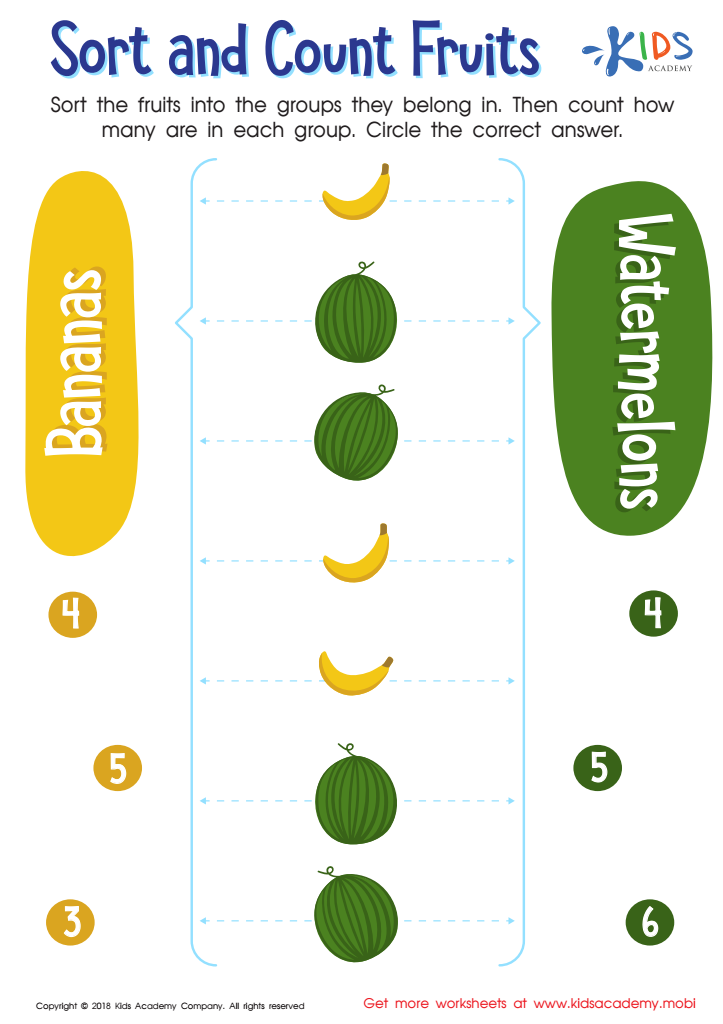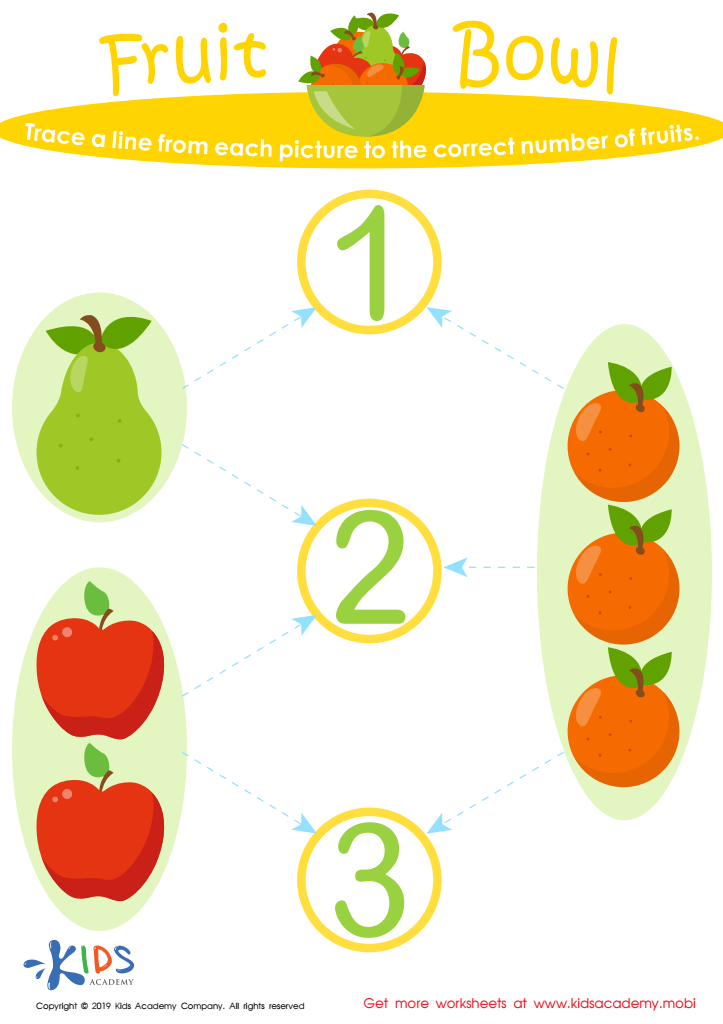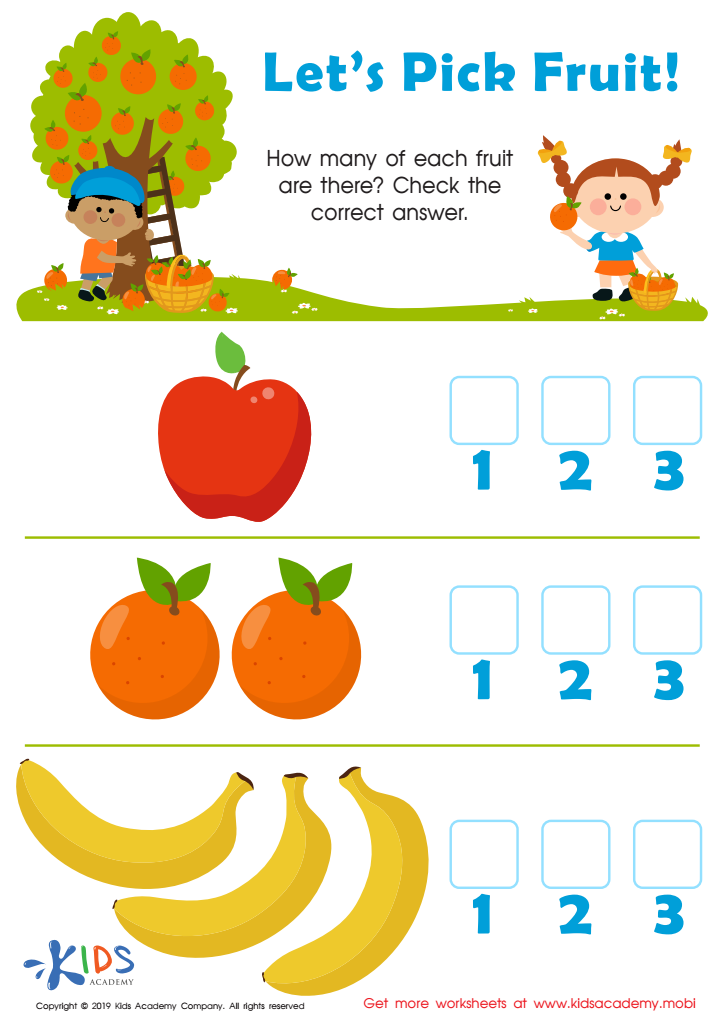Fruit identification Worksheets for Ages 3-5
3 filtered results
-
From - To
Introduce your child to the colorful world of fruits with our "Fruit Identification Worksheets for Ages 3-5". These engaging, printable worksheets are designed to enhance early learning skills, such as visual recognition, vocabulary building, and fine motor development. Perfect for preschoolers, our worksheets feature fun activities, like matching, coloring, and naming various fruits, making learning both educational and entertaining. Ideal for both classroom and home use, these resources support foundational knowledge and encourage healthy eating habits. Download our free fruit identification worksheets today and watch your little one flourish while having fun!


Sort and Count Fruits Worksheet


Fruit Bowl Worksheet


Let's Pick Fruit Worksheet
Fruit identification is a vital activity for young children aged 3-5, and parents or teachers should greatly care about this early learning exercise. Firstly, it enhances vocabulary development and language skills. When children learn the names and characteristics of various fruits, they expand their word bank and improve their ability to communicate effectively.
Secondly, it fosters cognitive development and critical thinking. By distinguishing fruits based on color, shape, texture, and size, children engage in sorting and classifying activities that sharpen their analytical abilities. These foundational skills are essential for more complex problem-solving tasks later in life.
Thirdly, early exposure to fruits promotes healthy eating habits. When children become familiar with different fruits, they are more likely to develop an interest in tasting and enjoying them. This can lead to lifelong preferences for healthier food options, combating issues like childhood obesity.
Moreover, fruit identification activities can be fun and engaging, involving sensory experiences such as touching and tasting, which are vital for hands-on learners. It also provides an opportunity for parents and teachers to bond with children, creating positive educational interactions.
Incorporating fruit identification into early education sets the stage for comprehensive learning, encouraging language development, cognitive skills, and healthy lifestyle choices, making it a worthy pursuit for both parents and educators.

 Assign to My Students
Assign to My Students


















